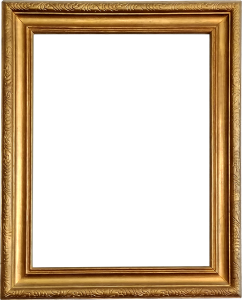Ways of Seeing

Episode 1
One of the most captivating things about John Berger’s Ways of Seeing is how he addresses the audience directly, breaking the fourth wall. It feels immersive, almost like he’s pulling you into the conversation rather than lecturing. He uses silence and juxtaposition to make viewers feel and experience his points, not just hear them. I love that his approach goes beyond simply telling; he shows—inviting us to see and sense what he’s arguing. When Berger discusses reproduction, it reminded me of the idea that “everything is a remix” video. In a world where images are constantly reproduced and reinterpreted, originality starts to blur. Every piece of art becomes part of a larger remix of culture—echoing what we see today with memes, AI-generated art, and even how social media users recreate trends or aesthetics they’ve seen before.

Episode 2
This episode really stood out to me because of how Berger exposes the subtle, everyday ways misogyny is portrayed in art. It’s like witnessing microaggressions embedded into paintings—moments where women are objectified, stripped of subjectivity, and reduced to something to be looked at rather than understood. Berger notes that women in these paintings don’t experience the same pleasure as the male spectator—they’re aware of being seen, and that awareness strips away authenticity. The comparison to a nightmare of being naked is so powerful because it evokes a universal sense of vulnerability and discomfort. What struck me most was how timeless this feeling is. The way women feel about their bodies and self-worth hasn’t changed much. In fact, I think social media has only exacerbated these feelings. In another class, I’ve been studying how the rise of unattainable beauty standards online correlates with higher rates of eating disorders. It’s eye-opening to realize that these internalized forms of misogyny existed long before social media—it just looks different now. The fact that women in the documentary felt this discomfort simply from looking at nude paintings says a lot. It made me think about how deeply ingrained these power dynamics are and how art—something that’s supposed to express humanity—has often reflected only one perspective.

Episode 3
I found Berger’s comparison of art to banks fascinating. He notes that art is treated as sacred. Just like money, art is often lcoked away and intentionally handled whehter that be controlling the temperature and moisture of the air that an art pieces sits in or the type of light its exposed to. Museums and galleries, like banks, control access and decide what holds value. This made me think about how subjective “value” really is. Just because something is treated as sacred doesn’t mean it holds equal value for everyone. Art can be precious to one person and meaningless to another. Yet institutions decide what deserves reverence, often excluding marginalized voices or nontraditional forms of art. Berger’s point reframed how I think about art—not as a universal truth, but as something shaped by systems of power and ownership.

Episode 4
This was my favorite episode because it feels so relevant to today’s world (and also deeply related to my psychology background and acedmic focus). Berger’s discussion of publicity and glamour immediately reminded me of my writing class, where we talked about similar ideas. The idea of glamour reminded me of a study I learned about in my Children and Media course, which found that materialism and life satisfaction negatively affect each other—especially for kids exposed to television advertising. Essentially, ads teach us that material possessions can fix unhappiness. Companies even use “cradle-to-grave” marketing techniques to secure lifelong consumers. It’s scary how early persuasion begins. Berger’s point that publicity shows us only what we aspire to, not the reality behind it, is so accurate. It’s the same with social media today. Instagram, for example, is a highlight reel. People show the best parts of their lives, which fuels comparison, FOMO, insecurity, and rising anxiety and depression among teens. Berger’s idea of “glamour” is in full effect. Consumption has become tied to self-worth. Buying, displaying, and desiring are all ways of signaling belonging and desirability. I actually dug up some of my work from when we were discussing Berger’s text and pulled a quote from my paper: “No matter where we look, images infiltrate our minds as we stay up to date with trends, news, and events. Publicity isn’t about selling a product—it’s about being envied. In our society, that’s reassuring. Art in publicity serves as a sign of affluence and cultural authority, symbolizing both wealth and refinement. Publicity creates two worlds: one of perception and one of reality.” Not gonna lie…proud of myslef for that one…freshman me had her thinking cap on! Question for class:Can we blame publicity for pushing this false reality on us, or should we blame ourselves—and society—for continuing to buy into it? .